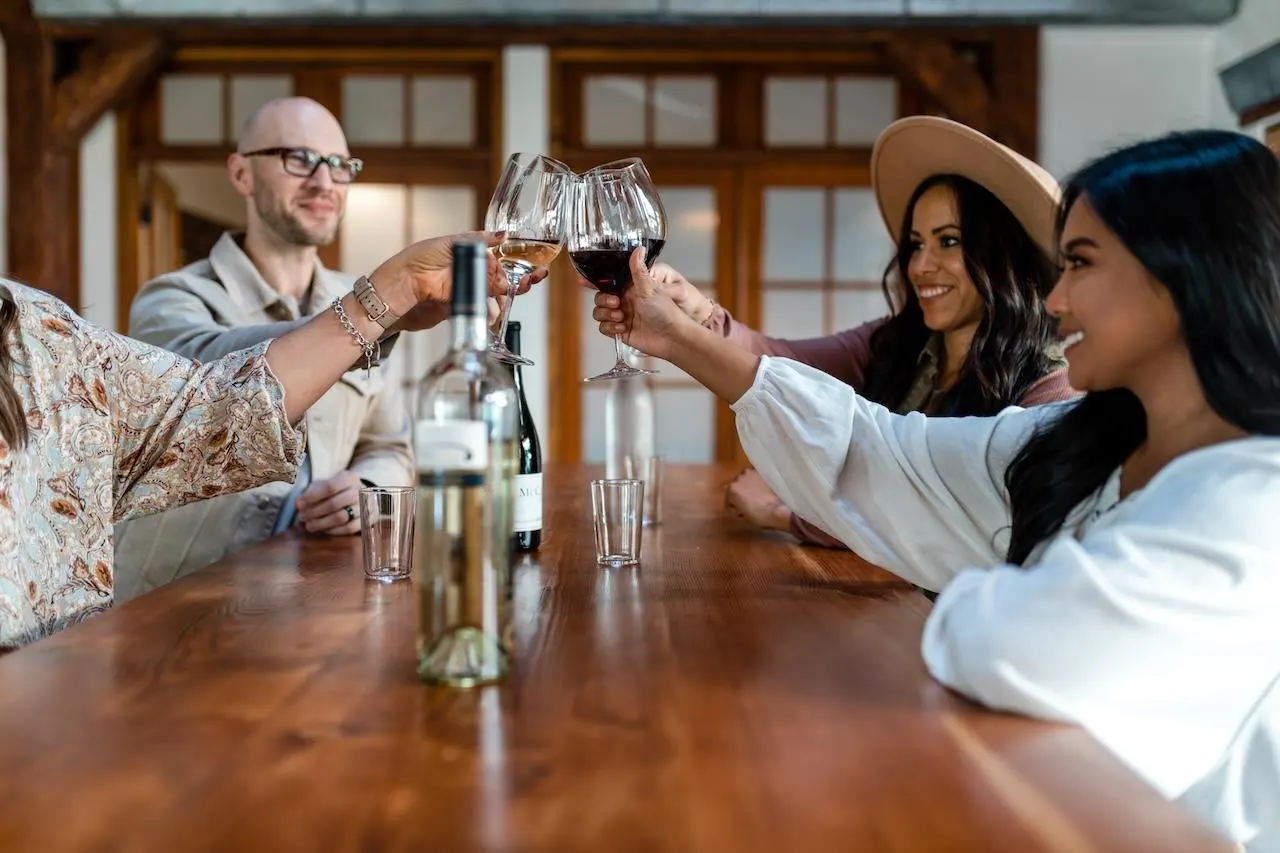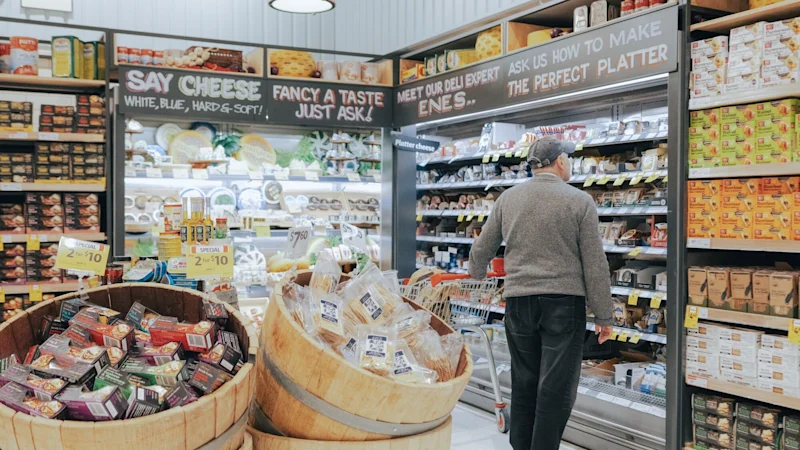Copyright forbes

Visitors Can Just 'Drop In' To Taste Wine in the Lodi Wine Region of California Without a Reservation Stephanie Russo While many wine regions across the U.S. are suffering due to lower-than-normal wine tourism rates, the Lodi Wine Region of California is fighting back with a new ‘No Reservations’ campaign and affordable wine tasting fees. “I think our industry has done a lot to put up barriers. We want to expand the occasions and make wine tasting easy and accessible to everyone,” Stuart Spencer, Executive Director of the Lodi Winegrape Commission, told me, in a phone interview. Spencer cited some statistics showing that wineries accepting walk-ins dropped from 45-80% pre-pandemic to just 10-15% today, and that average tasting fees have risen 200% since 2012 to $38 per person, according to a recent Silicon Valley Bank (SVB) Wine DTC Report. Furthermore, a recent Wine Market Council (WMC) study found that 37% of wine visitors rank ‘ability to just drop by’ among their top three priorities when visiting a wine region, and that 59% of visitors report that a personal connection with a winery owner or representative is a key driver for wine purchases. So the 60+ Lodi wineries have made a decision to bring back ‘drop-in’ wine tasting, just like the good old days in the wine industry. In this way, visitors can drop by a winery tasting room and participate in a casual tasting with an average tasting fee of just $16, which is often waived with a wine purchase. Lodi wines sold at the tasting room usually range from $22 to $52 per bottle. To make sure they appeal to all visitor preferences, they are still offering food pairings and more curated experiences that do require reservations, but for the visitor who enjoys flexibility and spontaneity, the ‘No Reservations’ option is quite attractive. “It’s much more than a ‘no reservations policy,’” Spencer continued. “This campaign is an embodiment of how we want to position Lodi in the world of wine and tourism. It’s more of an ethos that reflects our agricultural roots, our community values, and a welcoming spirit.” “Our ‘No Reservations policy’ is an ethos that reflects our agricultural roots, our community values, and a welcoming spirit.” Stuart Spencer, Executive Director, Lodi Winegrape Commission Welcome Arch to Downtown Lodi in the Lodi Wine Region of California Stephanie Russo Tips to Visit the Lodi Wine Region The Lodi wine region is only 35 miles south of the state capital of Sacramento (about a 40-minute drive). It is also 83 miles northeast of San Francisco (about a 90-minute drive, depending on traffic). Therefore, it can be an easy day trip option or a great weekend getaway. Established in 1869, Lodi is a welcoming agricultural community with many family farms and wineries spread out over gently sloping hills and plains, intermingled with beautiful California oak trees. What makes it unique from other California wine regions is that it has the highest concentration of old Zinfandel vines, with some plantings dating back as far as 1888. Tasting a century-vintage Zinfandel wine produced from grapes that have survived two world wars and Prohibition is a special treat for many wine lovers. Ancient Wine Grape Vines in Lodi California Stephanie Russo At the same time, Lodi also produces over 100 other different grape varieties, so there is something for every palate, including red, white, rosé, sparkling, and sweet wines. “In Lodi, we're proud to make wine for everyone to enjoy. We want wine tasting to be easy, welcoming, and focused on discovery. The welcome is real, the wines are exceptional, and our commitment to share it is genuine,” added Spencer. The region is filled with quaint restaurants, including some excellent Mexican cuisine options. There are also different lodging options, ranging from the luxury Appellation Lodi Wine & Roses Resort and Spa, to popular hotels like the Marriott and IHG, as well as many Airbnb and local B&B options. Another unique aspect of visiting Lodi is the large and welcoming Lodi Wine Visitor Center, where visitors can drop in for a tasting and learn about all of the different grapes and old vine vineyards of Lodi. It has been named the region's ‘coolest tasting room,’ by the San Francisco Chronicle. Lodi Wine & Chocolate Festival Ann Backman Collaborative Response of Lodi Winery Owners I was curious about how the ‘No Reservations policy’ was being accepted by the local winery owners, so I reached out to several in an online interview. Their responses were overwhelmingly positive and exhibited a strong sense of collaboration and community spirit. Gerardo Espinosa, Winemaker & Co-Owner of Anaya Vineyards, shared, “This campaign represents what makes our region special. A down-to-earth community that welcomes everyone. It’s about breaking down the barriers that have made wine feel formal or intimidating, especially for Latinos, who have played such a significant role in building this industry.” He added, “When people realize there are wineries in Lodi owned and operated by members of their own community, their perception changes. ‘No Reservations’ is about making wine approachable and inviting, showing that great wines and genuine hospitality can exist without pretense.” Jeremy Trettevik, Winemaker and Owner of Jeremy Wine Co., agreed with Espinosa that breaking down barriers and welcoming new segments of consumers is a key objective of the campaign. “No Reservations is about removing barriers that have been built over time that take away the spontaneity of wine discovery. I think we've inadvertently excluded new and younger wine consumers. This campaign is about bringing back that sense of discovery to a truly unique region,” Trettevik said. This resonates with me, because I was someone who fell in love with wine during college when I went to Napa and Sonoma with friends. It was a time when no reservations were required. The whole experience was easy and fun, and a great way to welcome new consumers to the world of wine. Fifth-generation proprietor of Harney Lane Vineyards, Jorja Lerner, is also very enthusiastic about the campaign. “We’ve seen Lodi grow from a quiet farming town into a globally recognized wine region, but our core values haven't changed. Our goal is to ensure that anyone visiting can taste the incredible quality of our wines and walk away feeling more knowledgeable, but most importantly, feeling like they've just spent the afternoon with a good friend.” She identified several expected benefits, but especially, “a profound sense of ease and spontaneity for our guests. This is, in fact, not a policy; it's a state of mind that aligns perfectly with our belief that wine country doesn't have to be complicated or overly scheduled.” Lerner added that her tasting room team was very excited about the new program, because that “means we lean into spontaneous moments — effortless, genuine, and warm service that makes people feel at home, which is something they are naturally great at. It empowers them to be the warm, welcoming face of Lodi.” The Small Family Harney Lane Winery in Lodi, California Harney Winery November and December High Season for Lodi Wine Tasting When I first heard about the new campaign, I was a little confused as to why Lodi would launch it towards the end of the year, when prime wine tourism season in other regions is usually the summer months. However, Stuart Spencer explained that it is very hot in Lodi during the summer, so many tourists like to visit in the autumn and winter. “In recent years, we’ve stayed busy through the holidays. Our customer base is largely more local/regional compared to Napa and Sonoma. We know that 78% of our DTC sales come from CA, and about 35% comes from San Joaquin County. The neighboring counties comprise a big percentage of the rest,” he explained. “We also believe visiting friends and relatives is a significant portion of our business and that increases during the holiday season,” he added. Jorja Lerner agreed with Spencer. “While winter is often considered 'slower' in many wine regions, it's actually a uniquely busy and high-value time for us. It becomes a period of deep connection.” Jeremy Trettevik mentioned that winter is red wine season, and Lodi is known for delicious and fruity red wines. “I love the idea of people gathering around a holiday meal with a bottle of our wine. There's a connectivity around the dinner table, with friends, family, grandparents – that you just don't get with a cocktail. Every bottle is a time capsule,” concluded Trettevik.” Editorial StandardsReprints & Permissions



